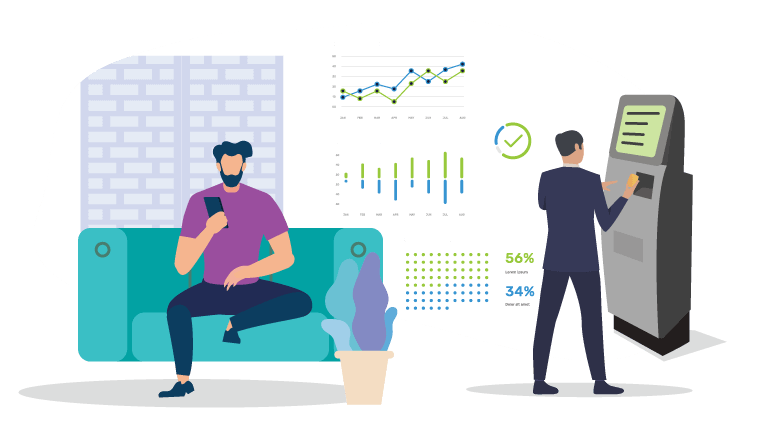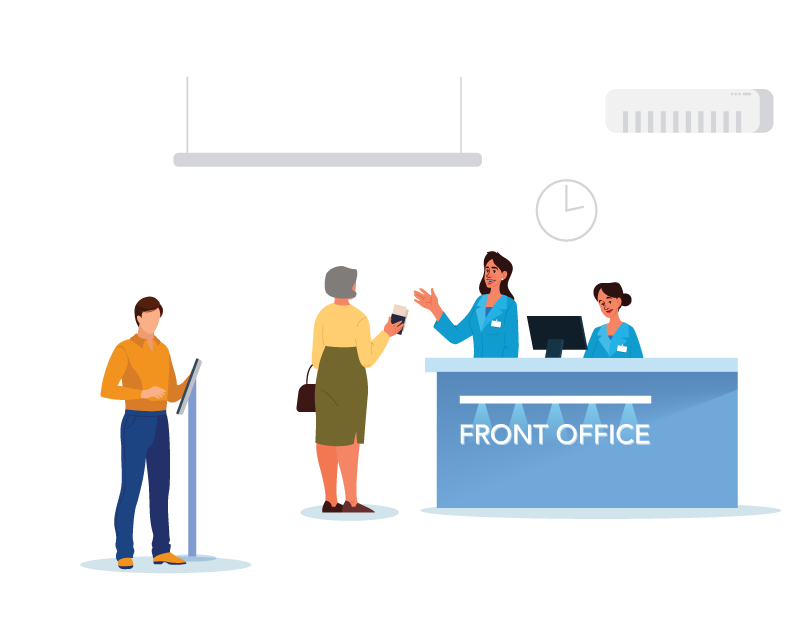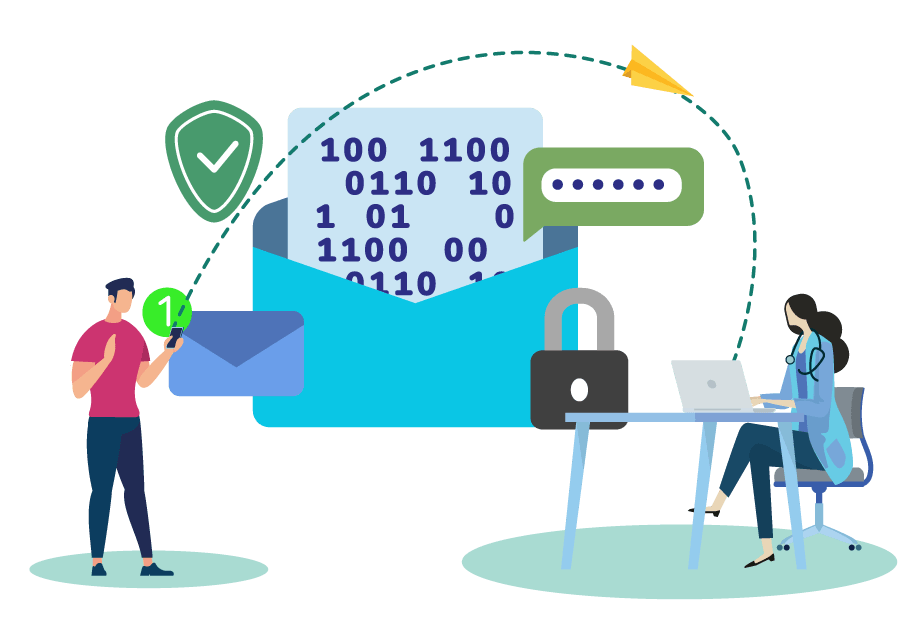Digital Patient Intake
Digital patient intake refers to the process of collecting relevant information from both new and returning patients before their appointment. This includes capturing demographics, clinical data, insurance details, payments, consent forms, and even clinical screeners & assessments.

How Does Traditional Patient Intake Work?
Traditionally, the patient intake process relies heavily on paper forms in most practices. When patients arrive at the practice for their appointment, they are given a clipboard with multiple forms, which typically include demographic details, medical history, insurance information, and consent agreements. They complete all this paperwork manually in a waiting room.
Once the forms are completed, the front desk staff manually reviews and verifies the information, often calling insurance providers for eligibility checks. The data is then manually entered into the EHR or PM system. Scanned copies of the forms are stored, and physical copies are kept for a set period before being disposed of as per practice policies.
Challenges of a Manual Patient Intake Process:
1. Longer Wait Times
A manual intake process slows things down. Patients who are already anxious about their visit are asked to fill out numerous paper forms. Then, they wait while staff members manually enter their details. As per studies, 30% of patients leave a doctor’s appointment due to long wait times which can result in practices losing their reputation and potential revenue opportunities.
2. Staff Burnout
The paper-based manual process takes a serious toll on healthcare staff as they have to perform a line of time-consuming, repetitive clerical work which includes mailing paperwork, scanning documents, and manually inputting patient details. With 90% of physicians seeing 11 or more patients daily, the administrative burden on front office staff is significant. No wonder 68% of front office employees report high stress levels.
3. Operational Inefficiencies
Manual intake leads to frequent data duplication and human errors. The staff must repeatedly copy information from patient intake forms into multiple systems, increasing the chances of mistakes. In fact, 61% of claim denials result from basic demographic or technical errors. Plus, with so much time spent on administrative tasks, the staff has less opportunity to focus on patient care.
4. Rising Costs
The paper-based intake process is not only inefficient but also expensive. On average, healthcare practices spend 3% of their annual revenue on paper, printing, mailing, and storage costs. Add in the cost of extra staff needed to manage paperwork, and it becomes clear that manual intake is a financial burden.
Why Should You Switch to Digital Patient Intake?
Automating the patient intake process helps overcome these challenges, enhancing efficiency, improving patient satisfaction, and boosting revenue collection.


Enhance Patient Experience
Patients today expect digital convenience, just like they get when booking flights or shopping online. In fact, 93% of consumers say they prefer healthcare providers that offer digital tools. A digital patient check-in system enhances the experience by:
- Offering flexible digital patient check-in options, including mobile pre-registration and self-service kiosks.
- Pre-filling forms with existing data, reducing redundant data entry.
- Displaying only appointment-relevant questions and forms.
- Providing multilingual forms to accommodate diverse patient populations.
Success Story: Alaska Orthopedic Specialists reduced patient wait times by 70% after modernizing their patient intake process.
Improve Staff Productivity
Instead of preparing intake forms, scanning documents, and manually entering data, the staff can focus on more meaningful tasks like assisting patients and ensuring smooth office operations. Patient intake software significantly reduces administrative workload, allowing your staff to be more productive and deliver quality care.
Success Story: Memphis Neurology save time nearly 10 minutes per patient by eliminating manual data entry from encounter forms.


Boost Clinical and Operational Efficiency
Paper-based intake often leads to mistakes and unnecessary delays. A digital patient intake software integrates directly with electronic health record (EHR) and PM systems, allowing the automated check-in workflow to synchronize with the rest of the clinical process. With connected workflows, your organization can achieve better efficiency..
- Eliminates manual data entry as the patient check-in data gets automatically updated into the EHR.
- Automated data capture ensures data accuracy.
- From the front desk, medical administrators to providers, everyone can access necessary data without time-consuming hand-offs.
Success Story: Knoxville Pediatric Associates saved 30 minutes daily due to auto-posting patient data into the EHR.
Faster and Easier Payment Collection
With 61% of patients saying they would switch providers for a better payment experience, practices need to make patient payment collection seamless. Digital patient intake allows patients to pay securely through various digital patient payment tools, including:With 61% of patients saying they would switch providers for a better payment experience, practices need to make patient payment collection seamless. Digital patient intake allows patients to pay securely through various digital patient payment platforms, including:
- Online payment portals
- Credit/debit card transactions
- Card swipe devices at the office
Payments can be collected before or after the visit, making it easier for patients and improving cash flow for practices.
Success Story: Premier Surgical Associates saw a 30% increase in payment collections after implementing a digital intake solution.


Build Better Patient Communication
In a traditional setting, the front office staff has to make and answer large volumes of phone calls to address patient queries and collect information. This can be highly taxing. And with 87% of adults preferring to ignore phone calls from unknown numbers, the traditional medium isn’t as effective as before.
A digital patient intake system streamlines communication through:
- Patient communication platform tools like automated appointment and payment reminders to reduce no-shows.
- Patient broadcast messaging to share important updates and information.
Read more to know how a leading surgical practice leveraged automated appointment reminders to minimize no-shows.
Success Story: Emerald Coast Neurology dropped no-show rates from 10% to 2% using automated appointment reminders.
Ready to Transform Your Patient Intake Process?
Switching to a digital patient intake system streamlines operations, reduces administrative burden, improves patient experience, and boosts patient payment collection. Say goodbye to paper-based inefficiencies and adopt a modern, patient-friendly approach to healthcare.
Discover how CheckinAsyst can help you upgrade your patient intake process. Schedule a demo today.
